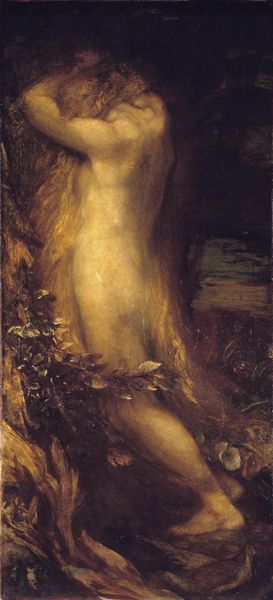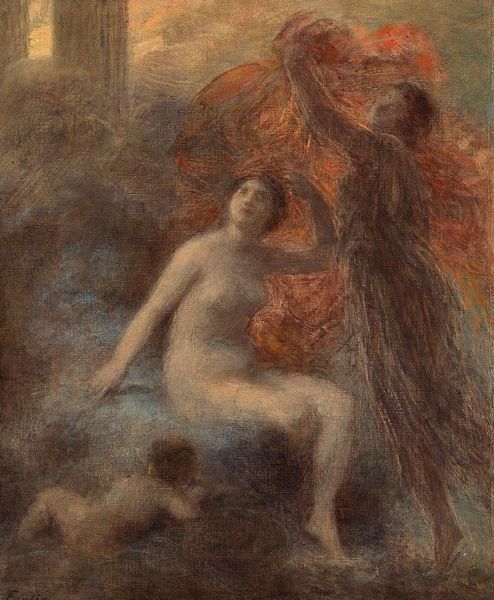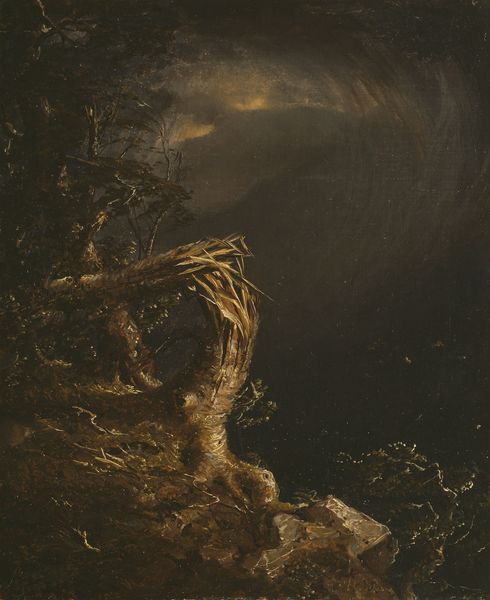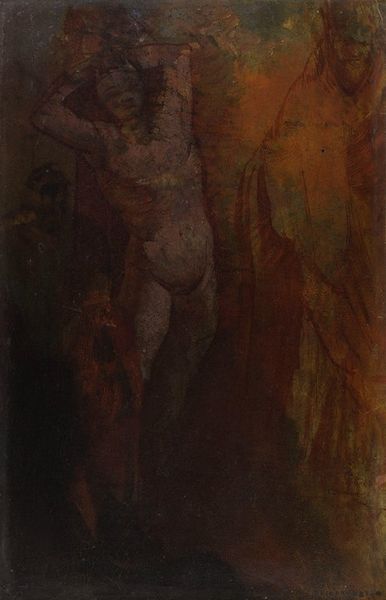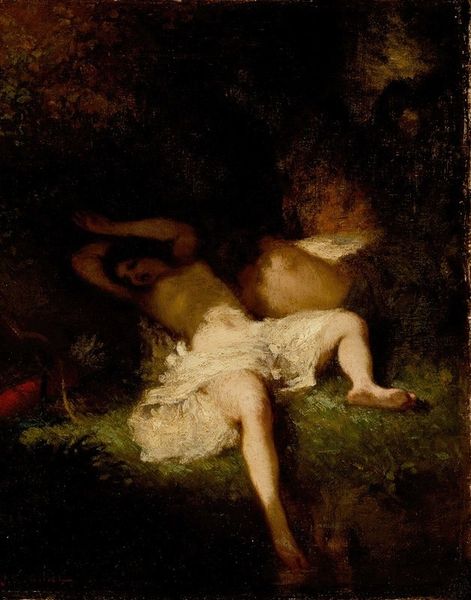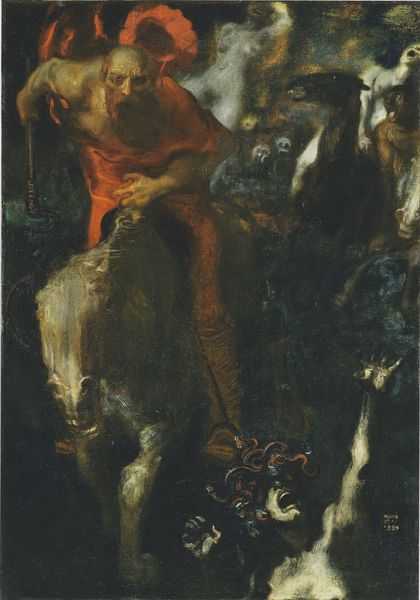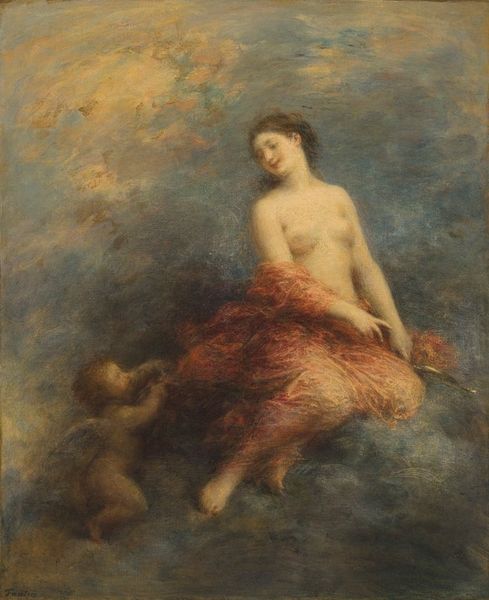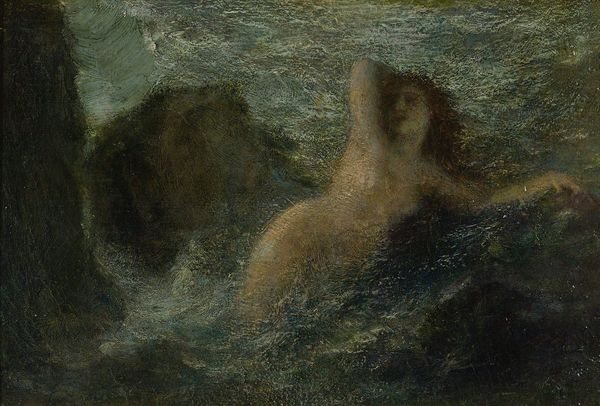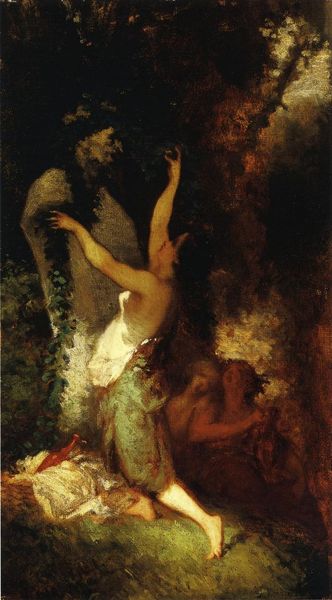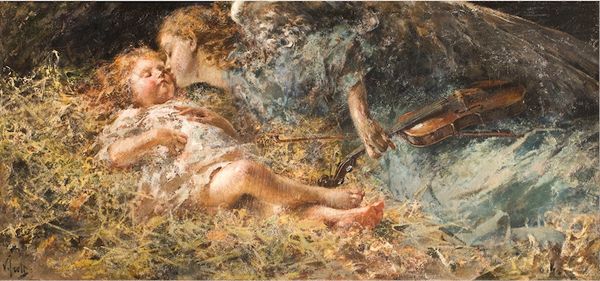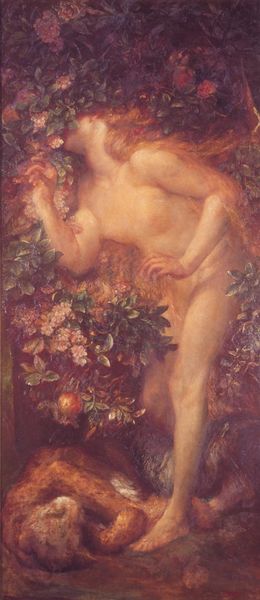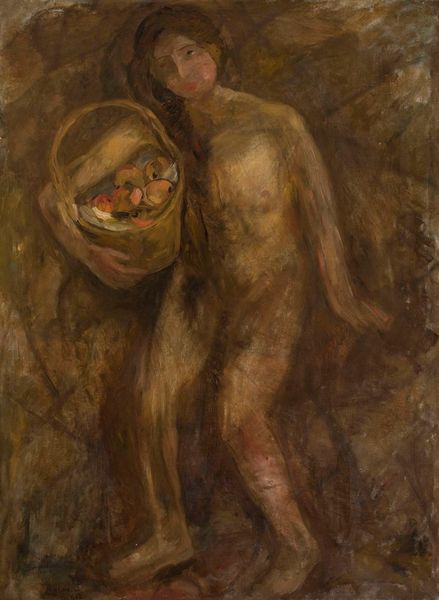
Dimensions: support: 2578 x 1168 mm frame: 2905 x 1520 x 90 mm
Copyright: CC-BY-NC-ND 4.0 DEED, Photo: Tate
Curator: Watts’ monumental painting, ‘She shall be called woman,’ presents a figure emerging from what appears to be earth and flora. Editor: It’s quite dreamlike, isn't it? The figure seems almost vaporous, a manifestation rather than a solid form. Curator: Indeed. The scale alone impresses—consider how it might have been interpreted at a time when the roles of women were under intense scrutiny. Editor: The lack of hard lines contributes to the ethereal quality, almost negating any definitive reading of her form. Watts seems interested in the symbolic power of emergence. Curator: I think the materiality enhances that effect, too. The blending of the figure with the earth tones conveys a sense of inseparability, and the soft lighting enhances the dramatic tone. Editor: Reflecting on it, the artwork compels me to contemplate the continuous interplay between the corporeal and the intangible. Curator: It invites us to consider the very essence of being.
Comments
tate 8 months ago
⋮
http://www.tate.org.uk/art/artworks/watts-she-shall-be-called-woman-n01642
Join the conversation
Join millions of artists and users on Artera today and experience the ultimate creative platform.
tate 8 months ago
⋮
Watts called these three paintings The Eve Trilogy. They represent Eve’s ascension to life, her temptation and her grief after her downfall. In her temptation she is shown greedily entwined with the apple tree. The dissolving forms of the central work correspond to the idea of Eve rising up in an explosion of light and colour. By contrast, the heaviness of flesh in the final work suggests her burden of sin and guilt. Gallery label, July 2007
